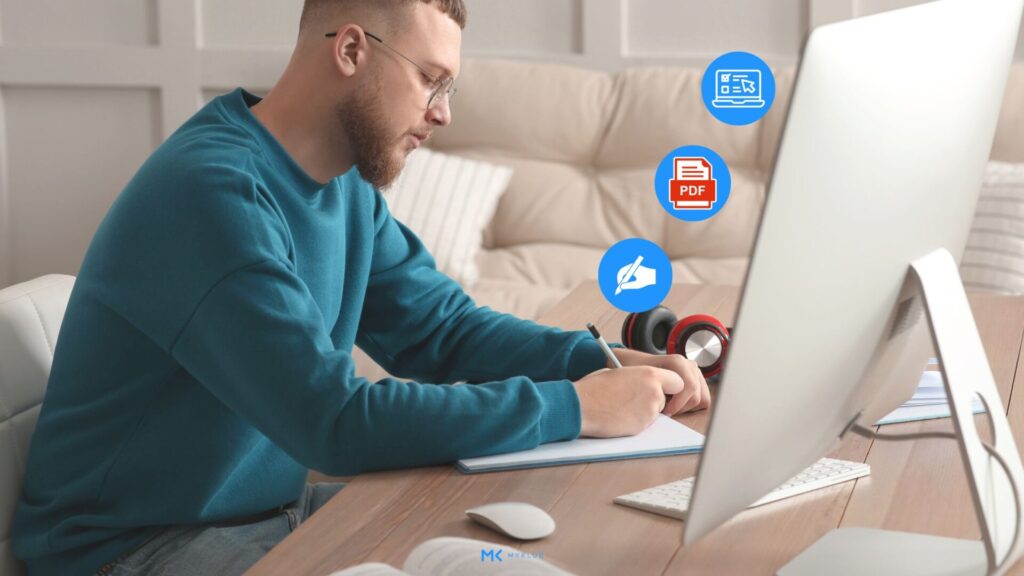Defining the importance of quality and quantity of training materials is crucial in the digital age. These two factors are inseparable to optimize the effectiveness of training. Indeed, this reflection is important to boost your customers' learning. Balance between rich content and adapted volume for optimal training. Select, weight and personalize: these are the key words of this educational work.
Inasmuch as online coaching and training platform, we are very involved in the rapid evolution of educational tools and methods. One of the major axes of this development concerns the importance of the quality and quantity of educational training materials. You may be wondering how to optimize the effectiveness of your online training courses? Rest assured, this article will answer it.
In this article's summary
TogglePriority for quality educational training materials
First, it is essential to look at the impact of quality materials on learning. These, when well designed and tailored, can greatly improve an individual's ability to understand and retain the information you transmit.
So how do you identify high-quality learning support? There are several criteria to consider, including the clarity of the information presented, the relevance of the content to the learning objective, and the ease of use of the material.
The relationship between learning quantity and effectiveness
Now let's move on to the question of quantity. The importance of balancing the quantity of learning materials is often overlooked. Indeed, information overload can be counterproductive. Often, a trainer who decides to overload his training is because of imposter syndrome. So the more content there is, the more relevant he will think his training will be. But watch out for this trap!
Information overload is a trap to avoid. Indeed, too much information can cause confusion and mental fatigue, which can ultimately harm learning. And therefore have the opposite effect what you desire.
Optimizing training effectiveness
What are the techniques to improve the assimilation of training? There are many approaches, ranging from spaced repetition to practical application of learned content.
What about innovations for more effective training? Information and communication technologies (ICT) offer a large number of possibilities for making training more interactive, more accessible and more personalized.
The importance of variety in learning materials
Deepening learning through a diversity of media is an effective way to stimulate engagement and motivation. Using a variety of media (such as videos, podcasts, interactive games, etc.) can accommodate different learning styles.
It is therefore crucial to adapt the materials to each person's learning style. Some learn best through visual supports, others prefer audio supports, while still others need practice to understand. So consider mixing different types of media to allow your learners to find the model that suits them.
Digital learning materials: a resource to exploit
The benefits and challenges of digital learning materials are numerous. They offer unprecedented flexibility and accessibility, but using them effectively requires skill and reliable access to technology.
How to effectively integrate digital technology into training? Successful digital integration requires careful planning, appropriate training for trainers and learners, and ongoing technical support.
How to measure the effectiveness of learning materials
Key indicators for assessing the effectiveness of the materials include learners' success rate, their level of satisfaction, rate of progress and their ability to use the acquired knowledge and skills in real-life situations.
The importance of feedback in the evaluation of materials should not be overlooked. They allow learning materials to be constantly adjusted and improved.
Strategies to improve the quality of learning materials
How to make learning materials engaging? The art of instructional design plays a crucial role here. It is necessary to consider not only the content, but also the presentation of the support, its interactivity, and its adaptability to the needs of learners. We advise you to use Can go to work on pretty presentations.
The role of personalization for better quality of learning is also important. Personalized learning materials can more accurately meet the needs and preferences of each learner.
Conclusion
In conclusion, the effectiveness of training materials does not only depend on their quality or quantity, but also on how they are used within a well-designed teaching strategy. So pay attention to these different aspects when choosing or designing your training materials. online formationThe world of online training is constantly evolving, and it's exciting to be a part of it!
- Source 1: The importance of educational supports in learning, Michel Clasquin-Johnson, Éditions de l’École Polytechnique
- Source 2: Cognitive overload: understanding to learn better, Dr. Albert Bandura, Presses de l’Université de Montréal
- Source 3: Personalization of learning: a response to individual needs, Prof. François Taddei, Éditions Foucher






